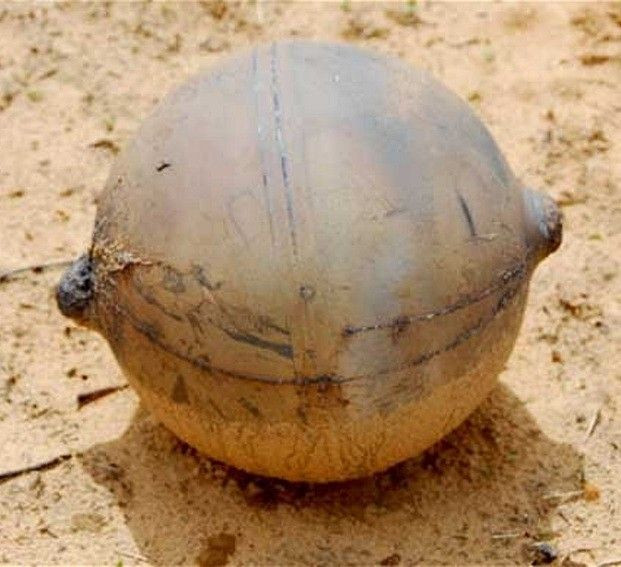Namibia 'Space Ball' Mystery is Solved [PHOTOS]

The mysterious ‘space ball’ discovered in Namibia last month has been identified, and as with many UFO sightings and speculations, the answer to the mystery is a little disappointing.
When the 14-inch, 13 lb. sphere fell to Earth back in November, it became the focus of a national security issue, with the country even reportedly enlisting the help of NASA and the ESA (European Space Agency).
But the ‘mystery space ball’ from Mars, which only became public knowledge this week, is almost certainly Earth-in-origin: the object has been identified as a hydrazine tank from an unmanned rocket.
‘Mystery Space Ball’ in Namibia?
When the story of the Namibia ‘space ball’ went public earlier this week, the find quickly became an international media free-for-all.
When the ball fell, it caused a crater 12 inches deep and 13 feet wide, and was found some 60 feet away from the initial point of impact. Locals claimed to hear several explosions in the days before it was discovered.
Initial speculation (beyond UFO debaters) indicated the extraterrestrial sphere could be a COPV (composite overwrapped pressure vessel), which NASA uses to store gases under pressure in space. If it was from NASA, the ball could then be identified, either as a COPV or as the “space junk” that still falls to Earth each year.
Mystery Solved: ‘UFO’ is Hydrazine Bladder Tank
Just before Christmas, however, a Gawker article from Adrian Chen received a comment that had since appeared to quash the UFO debate for good.
“For anyone wondering what it actually is, it’s likely a 39-litre hydrazine bladder tank (based on its apparent size; there are also much larger hydrazine tanks), the commenter wrote.
They're used on unmanned rockets for satellite launches, which would explain why they're falling down in such a specific geographic footprint.
After theories as far-reaching as an escaped particle from the Large Hadron Collider to a space Quaffle from an alternate Harry Potter universe, the hydrazine bladder tank is very likely the object in question, as googling the phrase seems to prove.
The mystery space ball has already been identified as a “metallic compound used in space vehicles.” NASA has yet to officially comment on the find, which landed some 480 miles from Windhoek, Namibia.
But it seems likely, as more and more news sources look into the similarities between the ‘mystery space ball’ in Namibia and the hydrazine tanks on Google, that a lone Gawker commenter has solved a mystery that had officials at a loss and UFO enthusiasts in an uproar.
© Copyright IBTimes 2024. All rights reserved.





















